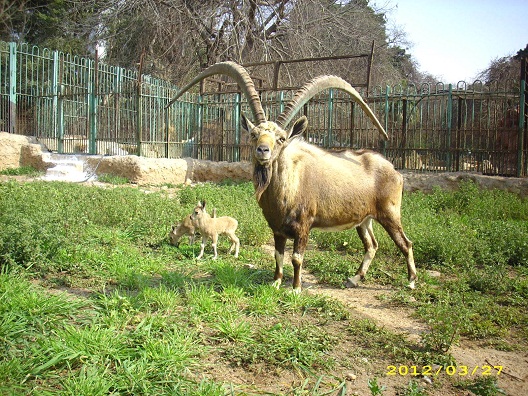Distribution:
Nubian ibex occurs in isolated populations in pockets of the coastal regions of northeastern Africa, the Sinai Peninsula, and the southeastern tip and western portion of the Arabian Peninsula. |  |
Habitat: Nubian ibex inhabit mountainous regions including gorges, outcrops, and scree areas in arid regions with sparse vegetation. They occur at varying elevations, from sea level to 3,000 meters. Generally, Nubian ibex inhabit the most remote, highest, and steepest cliffs.
Description: Nubian Ibex stand around 60 cm (24 in) tall at the shoulder and weigh around 50 kilograms (110 lb). Nubian Ibexes are a light tan color, with a white underbelly, in males there is also a dark brown stripe down the back. Nubian Ibex have long thin horns which extend up and then backwards and down. In males these reach around a meter in length while in females they are much smaller (around 30 cm/12 in).
Lifespan:It is about 17 years in captivity and 10-16 years in wild.
Diet:The main diet includes herbs, shrubs, tree foliage (especially Acacia), buds, fruits, and occasionally grass. Nubian ibex especially prefer casabas

Young male and two Baby Nubian Ibex at Giza Zoo |
Behavior:Nubian ibex are most active in the twilight period, resting and ruminating occurs in the afternoon or at night. During the winter months, Nubian ibex will seek shelter such as rock outcroppings or caves to avoid the cold, wind, or rain. They often hollow out shallow depressions in the ground in which to rest.
